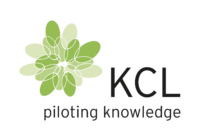Introduction to KCL’s Micro-Fibrillated Cellulose (MFC) Technology
In the quest for sustainable packaging solutions, KCL’s Micro-Fibrillated Cellulose (MFC) technology stands out as a game-changer. MFC is derived from industrial agro sidestreams, specifically sugar beet pulp, a by-product of the sugar industry. By removing lignin and hemicellulose, and then fibrillating the raw material through purely mechanical means, we produce a high-quality microfibrillar cellulose. This process is not only energy-efficient but also boasts a low carbon footprint, making it an ideal choice for eco-conscious companies.
Our extensive experience in nanocellulose materials has enabled us to design MFC that meets the stringent requirements of various applications. From enhancing the strength and stiffness of paper products to serving as a natural binder in coating formulations, KCL’s MFC offers versatile solutions for sustainable packaging. This innovative material is poised to revolutionise the packaging industry by providing an eco-friendly alternative to traditional materials.
Understanding the potential of MFC is crucial for companies looking to transition to greener packaging solutions. In this blog post, we will explore the benefits of using MFC in packaging, showcase successful case studies, outline the steps to transition to eco-friendly packaging using MFC, and discuss the future prospects of this revolutionary material.
Benefits of Using MFC in Packaging
One of the primary benefits of using KCL’s MFC in packaging is its ability to significantly enhance the strength and stiffness of paper products. This improvement allows for substantial savings in material usage during production, which not only reduces costs but also minimises environmental impact. By using less material, companies can lower their carbon footprint and contribute to a more sustainable future.
Another advantage of MFC is its role as a natural binder in coating formulations. Traditional synthetic latexes and other barrier materials can be replaced with MFC, resulting in a more eco-friendly product. This substitution not only reduces the reliance on non-renewable resources but also decreases the environmental impact associated with synthetic materials.
Moreover, the energy-efficient production process of MFC further enhances its sustainability credentials. By utilising industrial agro sidestreams and employing mechanical means for fibrillation, the overall process consumes less energy and generates a lower carbon footprint compared to conventional methods. This makes MFC an attractive option for companies committed to green technologies and sustainable practices.
Case Studies: Successful Implementations of MFC by KCL
Several companies have already reaped the benefits of incorporating KCL’s MFC into their packaging solutions. One notable example is a leading paper manufacturer that utilised MFC to enhance the strength and durability of their paper products. By integrating MFC, they were able to reduce material usage by 20%, resulting in significant cost savings and a lower environmental impact.
Another success story involves a packaging company that replaced synthetic latexes with MFC in their coating formulations. This transition not only improved the eco-friendliness of their products but also enhanced the overall performance of the coatings. The company reported increased customer satisfaction and a boost in their market reputation as a sustainable packaging provider.
These case studies demonstrate the tangible benefits of adopting MFC in packaging solutions. By leveraging KCL’s expertise and innovative technology, companies can achieve their sustainability goals while maintaining high-quality standards in their products.
Steps to Transition to Eco-Friendly Packaging Using MFC
Transitioning to eco-friendly packaging using KCL’s MFC involves several key steps. First, companies need to assess their current packaging materials and identify areas where MFC can be integrated. This may involve evaluating the strength, stiffness, and binding requirements of their products to determine the most suitable applications for MFC.
Next, companies should collaborate with KCL to develop customised MFC solutions tailored to their specific needs. Our unique piloting platform and comprehensive laboratory services support product development processes across diverse value chains. By working closely with our experts, companies can ensure that their MFC-based packaging solutions meet the highest standards of quality and sustainability.
Finally, companies should implement the new MFC-based packaging solutions and monitor their performance. This may involve conducting trials, gathering feedback from customers, and making any necessary adjustments to optimise the packaging. By following these steps, companies can successfully transition to eco-friendly packaging and contribute to a more sustainable future.
Future Prospects: The Evolution of MFC in Sustainable Packaging
The future of MFC in sustainable packaging looks promising, with ongoing research and development efforts aimed at expanding its applications and improving its performance. As more companies recognise the benefits of MFC, we can expect to see increased adoption of this innovative material in various packaging solutions.
One area of potential growth is the development of new MFC-based composites that combine the strength and stiffness of MFC with other sustainable materials. These composites could offer enhanced performance characteristics, making them suitable for a wider range of packaging applications. Additionally, advancements in MFC production techniques could further reduce energy consumption and carbon emissions, making the material even more eco-friendly.
In conclusion, KCL’s MFC technology offers a viable and sustainable alternative to traditional packaging materials. By leveraging our expertise and innovative solutions, companies can create eco-friendly packaging that meets the demands of today’s environmentally conscious consumers. As the packaging industry continues to evolve, MFC will undoubtedly play a crucial role in shaping a more sustainable future.
